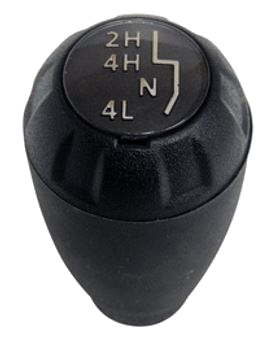What Are 2H, 4H, and 4L on 4×4?

The driving modes for 4x4s are 2H, 4H, and 4L. Driving at a normal speed but when traction is required requires 4WD High Range, 2H is 2WD High Range, and 4L is 4WD. Low for traveling at slower speeds when you need extra torque.
For trucks and SUVs, there are these three driving modes. When driving on pavement, certain 4WD vehicles operate on two-wheel-drive (often rear-wheel drive), and you only switch to four-wheel drive when driving off it.
There are certain automobiles with permanent all-wheel drive, however when driving on sealed surfaces, you can switch to four-wheel drive.
On-demand 4WD is available in several SUVs and trucks.
When they see slippage on their first axle, on-demand 4WD runs mostly in 2WD and only converts to 4WD when necessary.
Continue reading to discover more about 4WD driving modes.
What Does 2H Mean in 4x4s? | Jeep 2H 4H 4L

2H, or 2WD High Range, is the default driving mode for a four-wheel drive vehicle.
When you need your truck or SUV to run more efficiently and when the road conditions are regular, this is the driving mode you select.
You will only be able to drive two wheels in this mode, typically the rear wheels but occasionally the front wheels as determined by the automaker.
When a vehicle is classified as high-range, its gear ratios are practical for daily driving.
Some 4X4s do not have this choice available and are always in 4WD or AWD.
The car will switch to a more limited-slip or open differential rear-wheel drive when in 2H mode.
Most cars include a system of settings to make sure there is enough traction to stop slipping.
In this mode, your 44 will continue to slide if you drive it off the trodden route because it provides the least traction.
The wheel that lifts off the ground will experience the most torque in an open differential.
As a result, your car can continue to slide.
When the wheel lifts off the ground, traction control, if the car has it, will engage, and this may be enough to keep it moving.
Without traction control, your car won’t move because the off-the-ground wheel will keep spinning.
You might need a rear differential lock to fix this issue.
What is 4H in 4X4s?
The driving mode you require for driving at regular speeds on roads where high traction is required is 4WD High Range.
The wheels on the ground can provide the necessary grip to propel the vehicle off the road because all four wheels are rotating in this mode.
The 4H mode will activate all four wheels to help the 4WD get unstuck whether you are driving on a muddy road, sand, or in the snow or ice.
To free your vehicle or SUV from a stuck situation, the mode engages the front and rear wheels in high range.
This mode is suitable for speeds up to 62 mph.
Your car must be in gear for the mode to turn on.
The front axles will be engaged when you press the button or turn it, sending torque to the front wheels next to the back wheels.
Once 4H is selected, your engine will distribute power equally between the front and back axles.
Unless you manually activate cross-axle locking, the mode doesn’t do it.
Even if you lift one of your front wheels and one of your rear wheels, you can still experience traction issues.
Vehicles with traction control can help distribute torque among the wheels to keep your automobile from getting stuck.
Even traction control might not always be sufficient to free a trapped car.
In some circumstances, 4H is used in conjunction with a rear lock differential to add more traction.
The power sent to the rear wheels is shared evenly when the rear lock differential is engaged.
As a result, the front wheels receive the remaining 50% of the engine’s power, with each rear wheel receiving 25% of it.
The vehicle uses the same transmission in 4H as it does in 2WD.
What Does 4L Mean in 4x4s?
4WD Low Range might be a beneficial driving option if you need less torque when moving at low speeds.
Power and torque are at their highest in the range, but only when you’re moving slowly.
Use it when your vehicle is towing or pulling large cargo, whether you are traveling down or up a slope, over deep mud, or on rocky terrain.
The four wheels rotate more slowly in this mode than they would while traveling at a high range.
To give your car extra power, the mode multiplies the torque by three.
The transfer case gives close gear ratios in place of the usual transmission to modify the wheel speed in relation to engine speeds.
With engine braking, your car can maintain low speeds by using a narrower rev range.

There won’t be any abrupt power surges while you’re driving in 4H mode.
Long, steep hill descents can be done safely without the need of mechanical brakes.
Due to the lack of rapid torque spikes, this condition will also be helpful when climbing a slope.
The transfer case must be in the neutral position in order to engage 4L.
When the vehicle switches within the transfer case, you will hear a clunk.
In order to give you the stability you need to travel up and down a hill, the mode also disengages traction control, ABS, and stability control.
Are you sitting for hours on end on a hard floor? Traveling might be tiresome, and our feet may simply give out. Our foot rest travel accessories are perfect for this purpose. It’s meant to let you sit back and appreciate your lovely trip by elevating your feet. It also guards against lower back discomfort, stiffness, and foot tiredness and swelling that result from long journeys.


